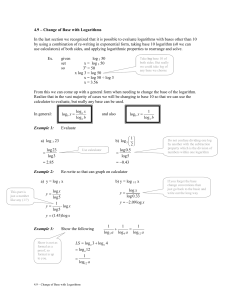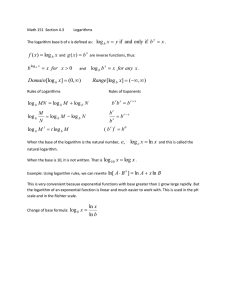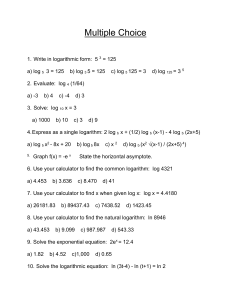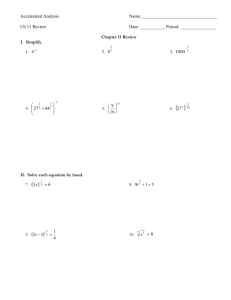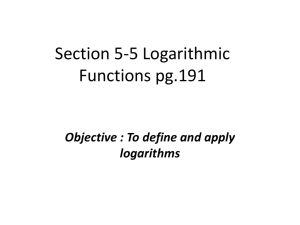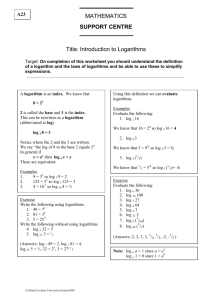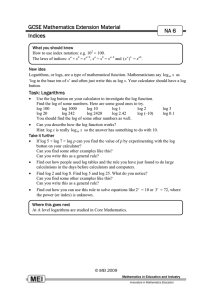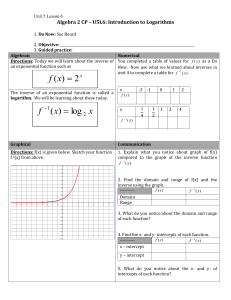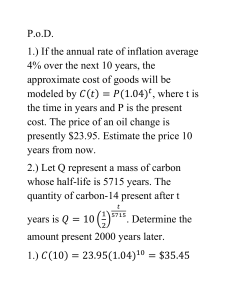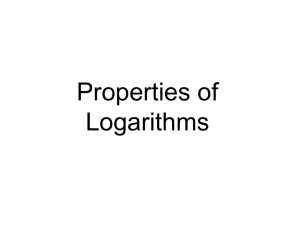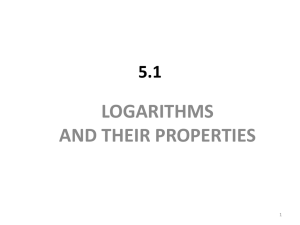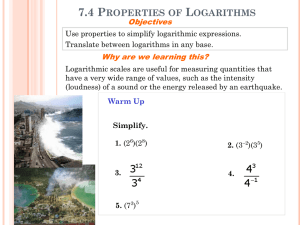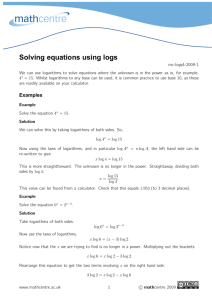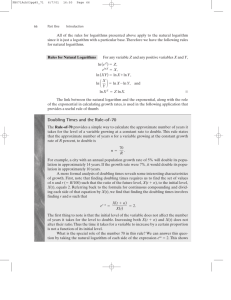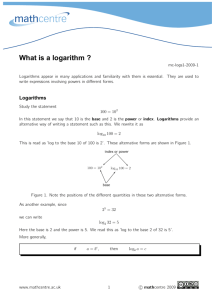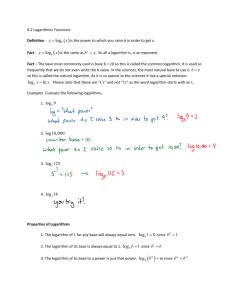Topic: Properties of Logarithms
advertisement
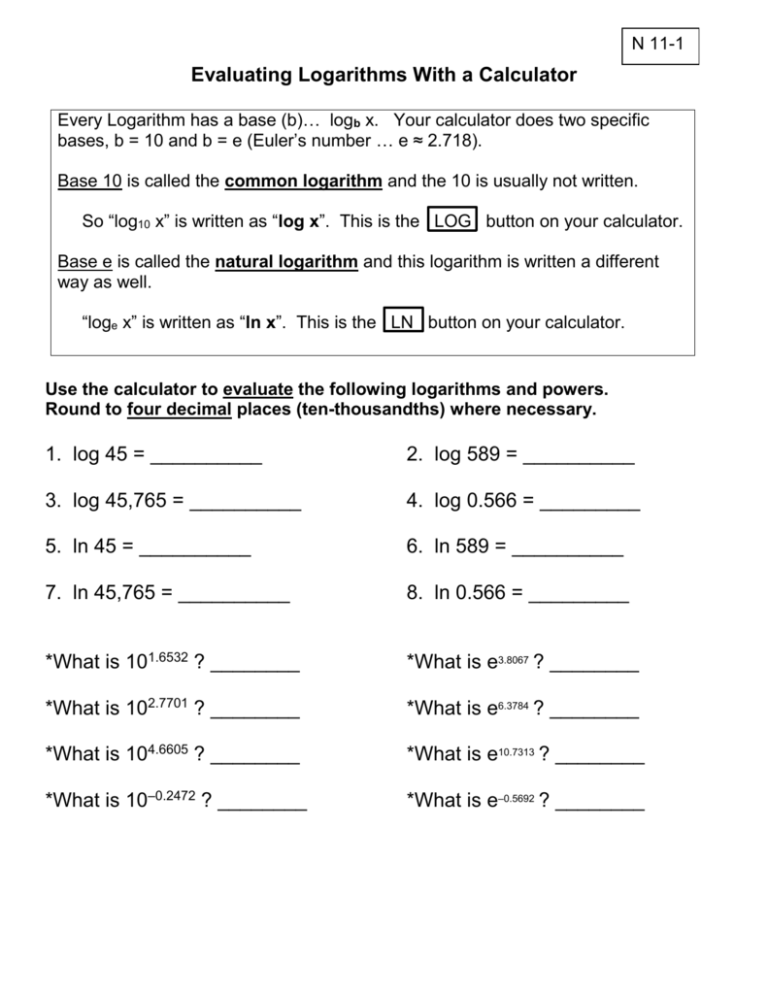
N 11-1 Evaluating Logarithms With a Calculator Every Logarithm has a base (b)… logb x. Your calculator does two specific bases, b = 10 and b = e (Euler’s number … e ≈ 2.718). Base 10 is called the common logarithm and the 10 is usually not written. So “log10 x” is written as “log x”. This is the LOG button on your calculator. Base e is called the natural logarithm and this logarithm is written a different way as well. “loge x” is written as “ln x”. This is the LN button on your calculator. Use the calculator to evaluate the following logarithms and powers. Round to four decimal places (ten-thousandths) where necessary. 1. log 45 = __________ 2. log 589 = __________ 3. log 45,765 = __________ 4. log 0.566 = _________ 5. ln 45 = __________ 6. ln 589 = __________ 7. ln 45,765 = __________ 8. ln 0.566 = _________ *What is 101.6532 ? ________ *What is e3.8067 ? ________ *What is 102.7701 ? ________ *What is e6.3784 ? ________ *What is 104.6605 ? ________ *What is e10.7313 ? ________ *What is 10–0.2472 ? ________ *What is e–0.5692 ? ________ N 11-1 There is a formula for changing the bases of logarithms. A logarithm is equal to the division of two logarithms in the different base. The log of the original base is in the denominator. Since our calculators do base10, we usually change to common log to evaluate. Change-of-base formula: log a x log b x log x log b a log a Use the change-of-base formula to evaluate the following to 4 decimal places. 9. log225 = ___________ 10. log512 = ___________ 11. log0.55 = ___________ 12. log2(-4) = ___________ 13. log3 (0.677) = ___________ 14. What would “log4(x)” look like in base 2? ___________
